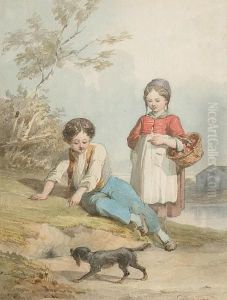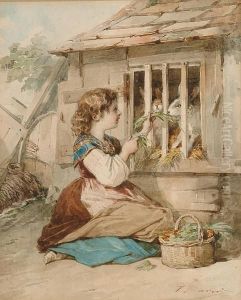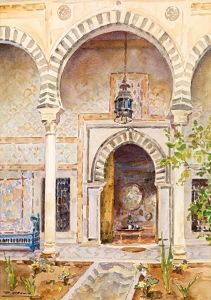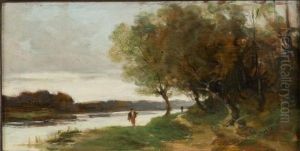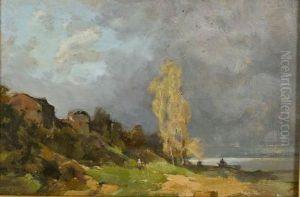Ferdinand David Paintings
Ferdinand David was a significant figure in the 19th-century music world, primarily known for his work as a violinist, composer, and music instructor. Born on June 19, 1810, in Hamburg, Germany, David exhibited musical talents at an early age, which paved the way for his impactful career. His contributions to music, especially violin playing and pedagogy, have left a lasting legacy that continues to influence classical music today.
David's early musical education was comprehensive, leading him to join the Gewandhaus Orchestra in Leipzig, where he eventually became the concertmaster under the direction of Felix Mendelssohn. This position allowed him to premiere important works, including the famous Violin Concerto in E minor by Mendelssohn, which was dedicated to him and premiered in 1845. David's collaboration with Mendelssohn was a pivotal moment in his career, solidifying his status as a leading violinist of his time.
As a composer, David contributed significantly to the violin repertoire, creating numerous works that included concerti, chamber music, and instructional pieces. His compositions, though not as widely recognized as those of his contemporaries, are valued for their technical demands and musicality. His collection of studies and caprices for violin remains a staple in violin pedagogy, underscoring his commitment to the development of young musicians.
David's influence extended beyond performance and composition to music education. He served as a professor at the Leipzig Conservatory, where he taught many students who would go on to have successful careers in music. His pedagogical methods and philosophy have had a lasting impact on violin instruction, promoting a balanced approach that emphasizes both technical proficiency and musical expression.
Ferdinand David passed away on July 18, 1873, in Klosters, Switzerland. His death marked the loss of one of the 19th century's most influential musicians. However, his legacy lives on through his compositions, his contributions to the violin repertoire, and the generations of violinists he taught and inspired. David's work bridged the gap between the classical and romantic eras in music, making him a pivotal figure in the history of the violin.
